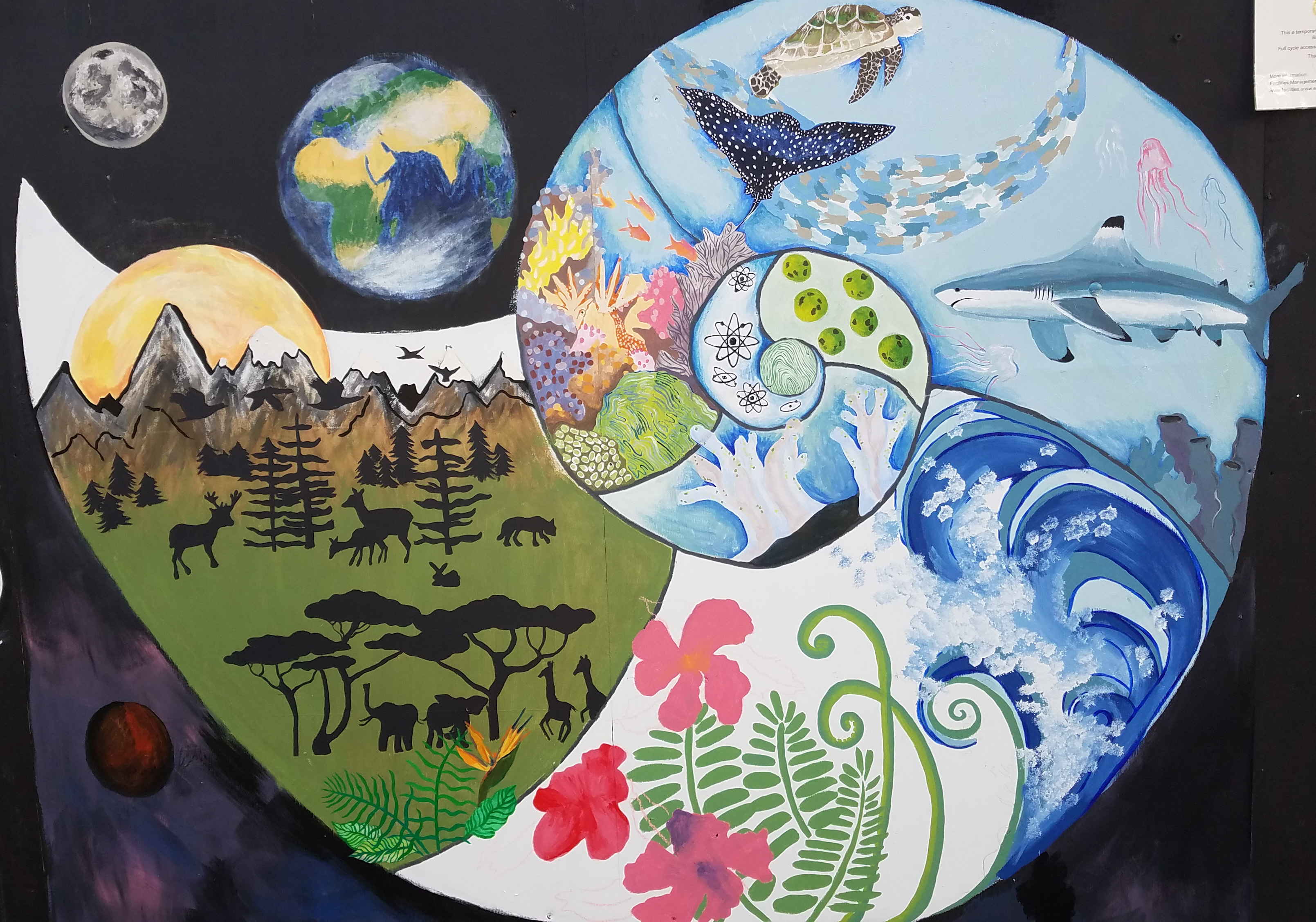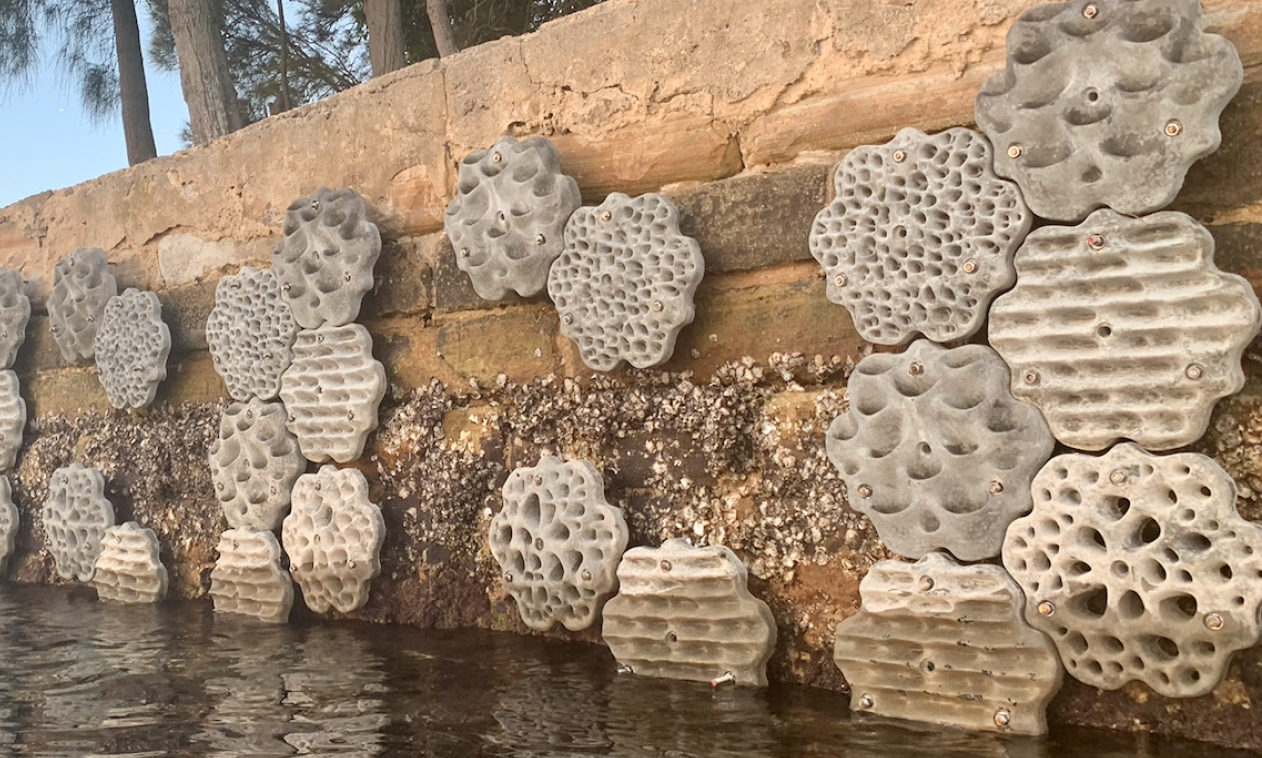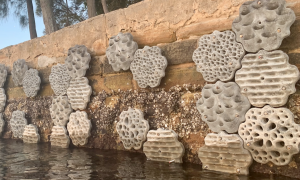By Rosie Steinberg and Melissa Pappas
 If the eyes are the window to the soul, can art be the window to the soul of science? Those who work and study at UNSW may have noticed some new art appearing near the Matthews Food Court. The works are a collaboration between PhD researchers from several universities in NSW and artists from the greater Sydney region. The essence of the project is to communicate science through a non-scientific medium, using the mind and expressive ability of artists. Together, scientists and artists are bringing messages to life that portray the impact of climate change on coral, the importance of healthy coral and kelp reefs, the organisational complexity of marine life, and the need to preserve rare corals in temperate waters.
If the eyes are the window to the soul, can art be the window to the soul of science? Those who work and study at UNSW may have noticed some new art appearing near the Matthews Food Court. The works are a collaboration between PhD researchers from several universities in NSW and artists from the greater Sydney region. The essence of the project is to communicate science through a non-scientific medium, using the mind and expressive ability of artists. Together, scientists and artists are bringing messages to life that portray the impact of climate change on coral, the importance of healthy coral and kelp reefs, the organisational complexity of marine life, and the need to preserve rare corals in temperate waters.
One of the science collaborators is Rosie Steinberg (![]() @RosieRiots), a Women in Maths and Science Champion and PhD researcher in marine science studying the role of temperate soft coral in Botany Bay. Her art collaboration with Corey Nichols (
@RosieRiots), a Women in Maths and Science Champion and PhD researcher in marine science studying the role of temperate soft coral in Botany Bay. Her art collaboration with Corey Nichols (![]() @BornReadyArt) examines the role of soft coral in sponge garden ecosystems and encourages viewers to look deeper into their backyard oceans. As a marine scientist, Rosie was surprised that there were beautiful coral gardens so near Sydney Harbour where she works and lives. Amazed that these corals were hidden gems, she made it a goal to ensure that every Sydneysider discovered this stunning coral comparable to corals of the Great Barrier Reef. If you want to see one of her first steps towards that goal, walk down Chancellery walk, gaze upon the murals, enjoy a coffee, and (if you’re lucky) have a chat with one of the artists or scientists.
@BornReadyArt) examines the role of soft coral in sponge garden ecosystems and encourages viewers to look deeper into their backyard oceans. As a marine scientist, Rosie was surprised that there were beautiful coral gardens so near Sydney Harbour where she works and lives. Amazed that these corals were hidden gems, she made it a goal to ensure that every Sydneysider discovered this stunning coral comparable to corals of the Great Barrier Reef. If you want to see one of her first steps towards that goal, walk down Chancellery walk, gaze upon the murals, enjoy a coffee, and (if you’re lucky) have a chat with one of the artists or scientists.
This collaborative project is just the first organised by an up-and-coming SciArt communicator and UNSW PhD candidate Melissa Pappas. Melissa,  along with many other researchers, feels the need to connect the public with the scientific community in an effective way such as artistic storytelling and she aims to pioneer this movement with projects like this one. To support her work and find out about future projects, please visit the Emerging Creatives of Sydney (ECoS) website at EmergingCreativesofSydney.com. To learn more about the mural project and to follow the collaborations on Twitter and Instagram, you can follow the scientists:
along with many other researchers, feels the need to connect the public with the scientific community in an effective way such as artistic storytelling and she aims to pioneer this movement with projects like this one. To support her work and find out about future projects, please visit the Emerging Creatives of Sydney (ECoS) website at EmergingCreativesofSydney.com. To learn more about the mural project and to follow the collaborations on Twitter and Instagram, you can follow the scientists: ![]() @RosieRiots, @MelissaPappas10, @CharEvePage, @thedivinggoose, @jesseb3rg, @TessMoriarty, @GeorgeValentin, and the artists:
@RosieRiots, @MelissaPappas10, @CharEvePage, @thedivinggoose, @jesseb3rg, @TessMoriarty, @GeorgeValentin, and the artists: ![]() @BornReadyArt, @studio_kaka, @shamanthi, @jeeves.henna, @francescaapage, @melissa.k
@BornReadyArt, @studio_kaka, @shamanthi, @jeeves.henna, @francescaapage, @melissa.k
Follow Rosie on Twitter




